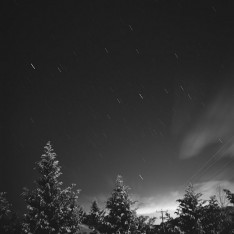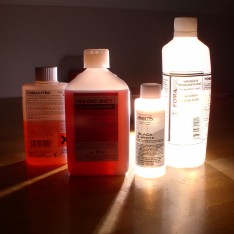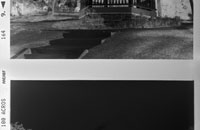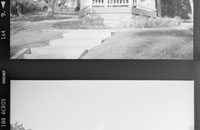 Up to now I’ve been shooting a lot of Fuji Acros 100 and the Freestyle “white label” version of the same (Legacy Pro 100). I haven’t really had to think very hard about the issue of reciprocity failure as a result.
Up to now I’ve been shooting a lot of Fuji Acros 100 and the Freestyle “white label” version of the same (Legacy Pro 100). I haven’t really had to think very hard about the issue of reciprocity failure as a result.
Reciprocity failure is where the normal relationship of 1 stop of shutter speed being reciprocated by one stop of aperture in the opposite direction breaks down, and where an extra stop of exposure requires significantly more than double the exposure time. All films suffer it to some degree. Digital capture remains linear for any exposure time, but the trade-off is often increased noise.
With Acros/LP100 that doesn’t happen until you hit exposure times of over two minutes, and to date I’ve yet to run into a situation where I needed any longer an exposure aside from one shot where I was aiming to capture star trails (and in that case reciprocity isn’t really a problem, it might even be helpful in keeping the exposure of the overall scene in check). It’s an excellent emulsion for night shooting, in any case.
I’ve been trying out some Ilford HP5+ lately though and earlier tonight was out in downtown Roanoke, freezing my arse off with the intent of getting some night shots of city lights while Kelli went to her writers’ group. I needed to check on when the dreaded reciprocity failure kicks in first, however.
Now, Ilford provide pretty good datasheets for their films, right there on their website. But it struck me as a little odd that all of their films have the exact same reciprocity curve. Yes, they say HP5+ (a traditional type emulsion) has the exact same characteristics as the Delta films (their modern core shell type emulsions, similar to Acros and the Kodak T-Max range). Something smelled a little rotten to me.
So I dug around a bit more and found this article, “Black-and-White Reciprocity Departure Revisited” by Howard Bond, who decided to thoroughly test some film emulsions and compare their reciprocity characteristics to the manufacturers’ claims.
Turns out the Ilford datasheets aren’t too accurate. Neither are the ones from Kodak. Anyway, with both official and tested times taped to the back of my trusty Gossen Luna Pro F, I set out on an hour-long wander around downtown, shooting 12 big square frames in the Yashica-A. Mostly I kept exposure times in the sub-4-second region, where the official and unofficial exposure adjustments were nearly identical. For 8 second metered exposures I split the difference somewhere in the teens.
But in one case I did shoot two versions of the same scene, one adjusted according to the Ilford curve, and one adjusted according to Howard’s testing. I’ll be curious to see which worked best when I develop that roll.
 I’ve become quite keen on Fuji Acros 100 stand developed in Rodinal at 1+100 dilution for an hour, with a minute of gentle inversion agitations to start. It makes for negatives with just a little grain that I find pleasing and great retention of detail over a wide contrast range.
I’ve become quite keen on Fuji Acros 100 stand developed in Rodinal at 1+100 dilution for an hour, with a minute of gentle inversion agitations to start. It makes for negatives with just a little grain that I find pleasing and great retention of detail over a wide contrast range.
